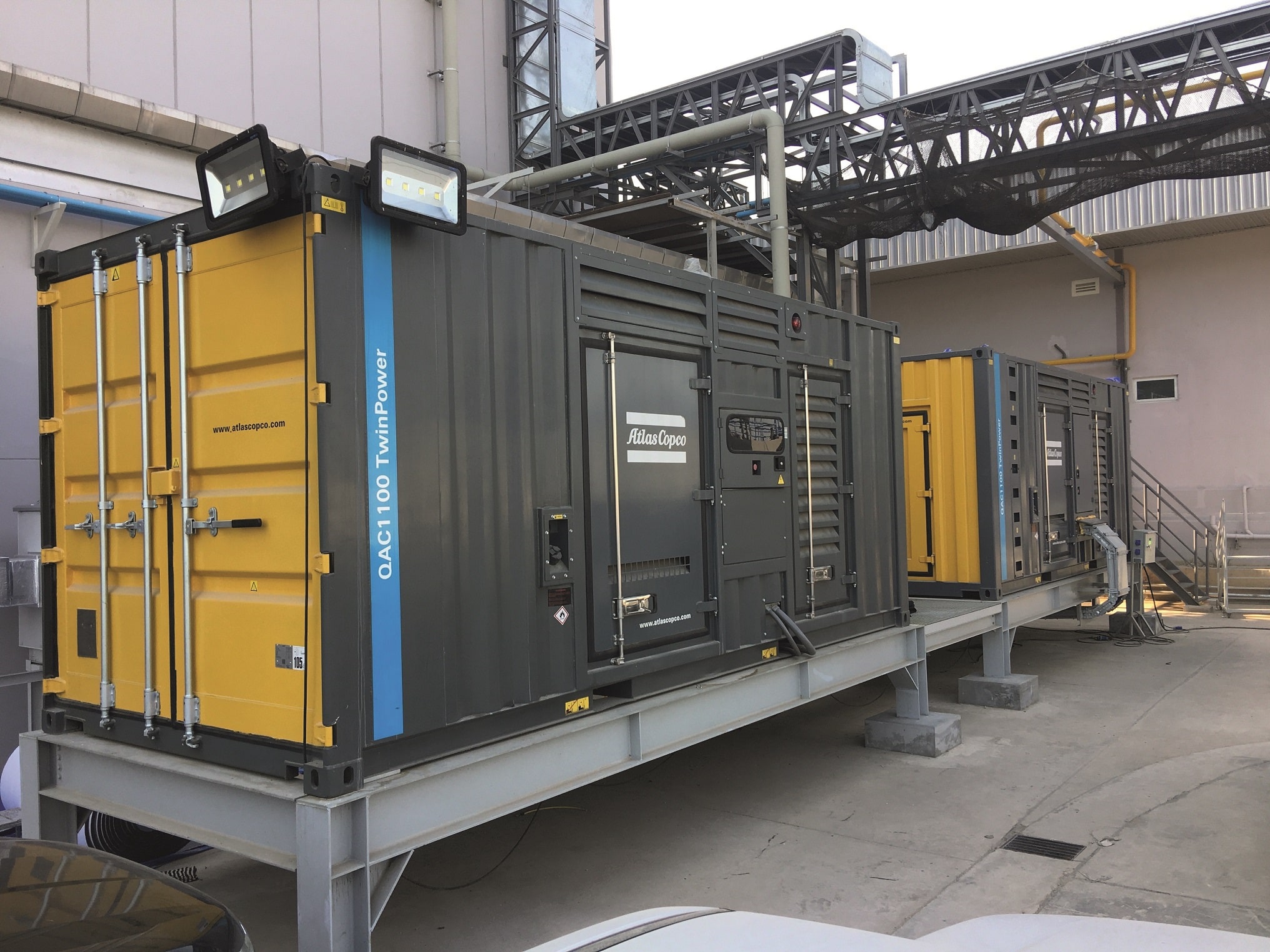Atlas Copco is committed to delivering efficient and sustainable solutions that contribute customer plant optimisation through the development of top-tier products and cutting-edge technologies. Atlas Copco Power Technique’s range of world-class generators deliver superior performance, rugged reliability and efficiency over an extended life span.
“Mainstay to our comprehensive generator portfolio is the innovative QAC1100 TwinPower™,” says David Stanford, Atlas Copco Power Technique Business Line Manager – Portable Products. “This engineering masterpiece redefines mobile power generation solutions by housing two generators side-by-side in a standard 20-foot container to provide customers with reliable and flexible prime and critical standby power.”
The two fully loaded QAC generators deliver up to 1MW of predictable power on a single platform. “We are in effect doubling the power and flexibility for our customers,” explains Stanford. “Moreover, the QAC1100 TwinPower™ adds even more value from a productivity and uptime perspective as the unit also serves as a back-up solution; one generator can essentially run at 50% while the other is being serviced, providing operators with seamless 24/7 power supply.”
Moreover, owing to a smart configuration and fast-paralleling system, the two generators are able to work independently or in parallel with each other (one unit working at 50Hz and the other at 60Hz), providing multiple solutions and combinations between prime and standby use. Customers are subsequently able to conveniently choose the power solution best suited for those applications with changeable power and current usage requirements.
According to Stanford, the unrivalled load acceptance ability of these generators is due to the engine/alternator performance which, in association with its respective advanced control systems, is able to accept a 100% load step with more than 70% load step acceptance within the ISO 8528-G3 class respectively.
Unrivalled when it comes to flexibility and economy, this unique modular solution will provide reliable power for virtually any application that has variable load requirements across a wide range of industries including utilities, construction, mining, quarrying, oil & gas, as well as the rental sector. Featuring a compact footprint and low noise levels (70dB(A) at 7m), these containerised generators are highly suited for applications that are at the heart of the working environment and can be placed in the workspace close to where the power is needed, while augmenting productivity and safety.
Supporting Atlas Copco’s green narrative, the fuel-efficient QAC generators save up to 10% at maximum performance, equalling or even bettering a conventional single engine generator running under normal load and minimising customers’ carbon footprints.
Uptime along every phase of the supply chain is fundamental to operational sustainability and profitability. The ISO-certified container which houses the two QAC generators, can be easily manoeuvered onto a flat-bed truck for transportation to and safe positioning on job sites to provide power with minimum delay.
Further contributing to uptime and elevated production levels is the QAC generator’s remarkable serviceability. The unit requires less than two hours of service after 500 hours of operation. The two generators’ engines and alternators are strategically positioned on opposite sides of the platform, providing fast, easy access to major components. Large access panels, a standard heavy-duty dual-stage fuel and air filtration and several custom service tools also facilitate maintenance and contribute to longer up-time and extended service intervals.
Harboured in a robust container, these generators will perform seamlessly in extreme temperatures and at high altitudes, with the QAC’s smart electric VSD (Variable Speed Drive) motor-driven engine/alternator cooling system guaranteeing 100% power at 40°C at an altitude of 1000m.
Designed by Atlas Copco’s highly skilled engineers, these EU compliant QAC machines are manufactured from superior quality materials and produced in world-class facilities applying best practices. “This unique modular unit serves as a fine example of taking our customers’ needs into consideration during product design stages. Our objective is that, through optimal perform and efficiencies over an expanded lifespan, our products add maximum value by delivering low total operational and ownership costs to our valued customers,” concludes Stanford.



